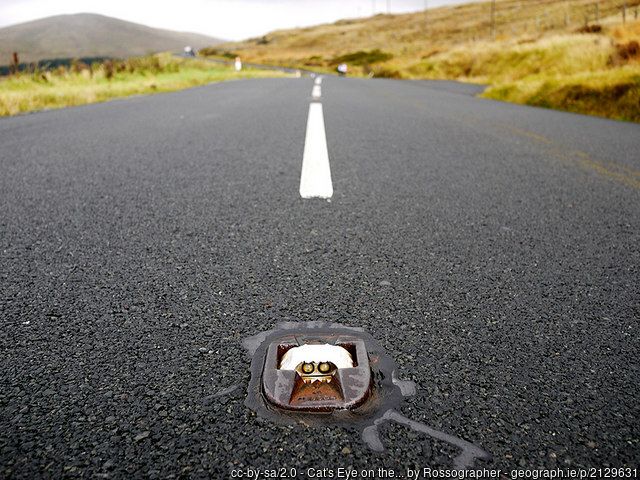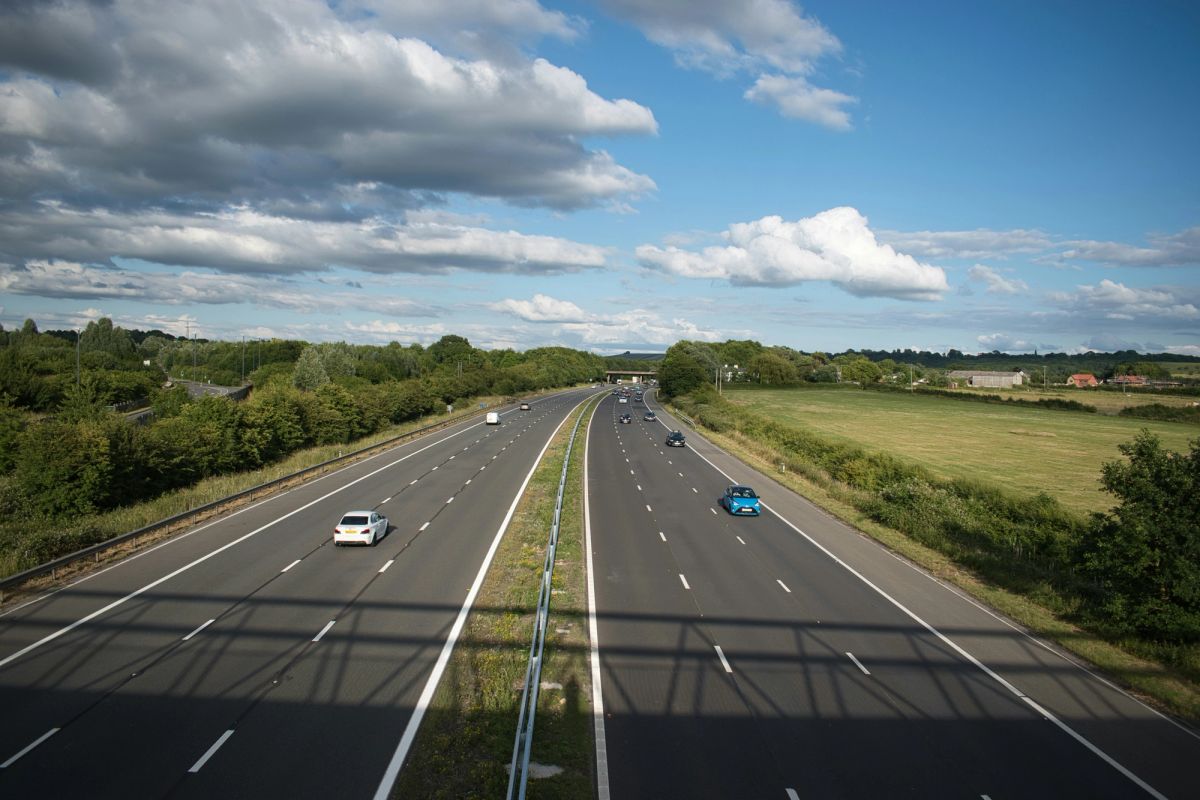Reflective Studs on the Motorway
Different colours indicated different sections of the road, including exits, emergency refuges and the central reservation
Reflective road studs, known as 'Cat's Eyes,' are a vital safety feature on UK roads, designed to enhance driver visibility in low light and adverse weather. Invented by Percy Shaw in the 1930s/ The UK employs a colour-coding system to provide drivers with instant information about their position on the road.
- White: Separates lanes of traffic moving in the same direction.
- Red: Marks the left-hand edge of the road.
- Amber: Lines the central reservation, separating traffic moving in opposite directions.
- Green: Indicates the edge of the main carriageway at lay-bys and slip road entry/exit points.
- Blue: Marks the location of fire hydrants for emergency services.
- Fluorescent Green/Yellow: Used for temporary lane markings during roadworks.
Cats Eyes

For many drivers, they are a familiar, fleeting glimpse in the dark – tiny, coloured lights that appear in the sweep of their headlights. These unassuming markers, officially known as reflective road studs but affectionately nicknamed 'Cat's Eyes', are a cornerstone of road safety in the United Kingdom. They provide crucial guidance and warnings to drivers, especially during the darkest nights and in the most challenging weather conditions.
At its most basic, a reflective road stud is a safety device embedded in the road surface. Its purpose is to reflect the light from a vehicle's headlights back towards the driver, clearly delineating lanes and the edges of the carriageway.
This simple act of reflection becomes incredibly important when visibility is poor, such as in heavy rain, dense fog, or on unlit stretches of motorway. Without them, navigating the vast and fast-paced environment of a motorway at night would be a significantly more hazardous undertaking.
The genius of the traditional "Cat's Eye" lies in its clever, self-cleaning design. Invented by Yorkshireman Percy Shaw in the 1930s, the original design consists of a series of retroreflective glass lenses housed in a rubber block, which is then set into a durable cast-iron base. When a vehicle drives over the stud, the rubber housing is compressed, and the lenses are wiped clean by a small, fixed rubber wiper. This ingenious mechanism ensures that the studs remain effective even after being subjected to the dirt and grime of the road.
While the fundamental principle remains the same, the world of road studs is not a one-size-fits-all affair. A colour-coded system is employed to provide drivers with instant, subconscious information about their position on the road. Understanding this system is a vital part of safe motorway driving.
White Studs: The Lane Dividers
White studs are the most common type of reflective marker found on our motorways. Their primary function is to separate the lanes of traffic. As you drive, the continuous line of white studs to your left and right clearly marks the boundaries of your lane, helping to prevent drifting and ensuring a smooth and orderly flow of traffic.
Red Studs: The Left-Hand Edge
To the far left of the carriageway, separating the main lanes from the hard shoulder or the verge, you will find red reflective studs. These act as a critical warning to drivers, indicating the absolute edge of the road. Seeing red studs in your direct line of travel is a clear signal that you are straying too far to the left and need to correct your position immediately. In essence, red means danger and marks a boundary that should not be crossed except in an emergency.
Amber Studs: The Central Reservation
On the opposite side of the motorway, lining the central reservation that separates the two directions of traffic, are amber studs. Similar to their red counterparts, amber studs define the right-hand edge of the carriageway for drivers in the outside lane. They serve as a constant reminder of the proximity of the central barrier and help prevent vehicles from veering into it.
Green Studs: Entry and Exit Points
Green studs have a specific and important role in indicating areas where traffic can join or leave the motorway. You will find them marking the edges of slip roads, both at entry and exit points. Seeing a line of green studs alerts a driver to an upcoming junction, allowing them to prepare for merging traffic or to position themselves for exiting the motorway.10 They essentially signal a break in the continuous main carriageway.
Blue Studs: A Helping Hand for Emergency Services
Less common but equally important are the blue reflective studs. These are not intended for the general public in the same way as the other colours. Instead, they are strategically placed to indicate the location of emergency access points and fire hydrants. They are an invaluable tool for the police, fire brigades, and ambulance services, allowing them to quickly locate essential resources in the event of an incident.
Fluorescent Green/Yellow Studs: Temporary Changes Ahead
When roadworks are in place, the layout of the motorway can be temporarily altered. To guide drivers safely through these modified sections, fluorescent green/yellow studs are used. These highly visible markers indicate temporary lane changes or the outline of a contraflow system. Their distinct colour immediately signals to drivers that the usual road layout has been adjusted and that extra caution is required.
The Bright Future of Road Studs: Smart and Solar Technology
While the traditional "Cat's Eye" has served drivers faithfully for decades, technology is continually evolving. The latest innovations in road stud technology are focused on increasing visibility and providing dynamic information to drivers.
Solar-Powered Studs: A significant advancement is the development of solar-powered road studs.14 These studs contain small solar panels that charge an internal battery during the day. At night, this stored energy powers bright LEDs within the stud, making them actively emit light rather than just passively reflecting it. This results in a much greater visibility range, often up to 900 metres, which is a tenfold increase on traditional studs. This enhanced visibility gives drivers significantly more time to react to changes in the road ahead.
Intelligent Road Studs: The next frontier is the "intelligent" or "smart" road stud. These are a step beyond their solar-powered cousins. They can be hardwired into the traffic management system and can be controlled remotely. This allows for dynamic lane marking. For example, at a complex junction, the studs can light up in sequence to guide drivers into the correct lane for their intended destination, reducing confusion and the risk of last-minute lane changes. On smart motorways, they could be used to indicate the closure of a lane in real-time by changing colour or flashing.
These intelligent systems have already been trialled and implemented in various locations across the UK, particularly at notoriously busy junctions and in tunnels. The ability to actively manage traffic flow at a granular level by controlling the road markings themselves holds immense potential for improving safety and reducing congestion on our increasingly busy road network.
« Back to Knowledgebase

